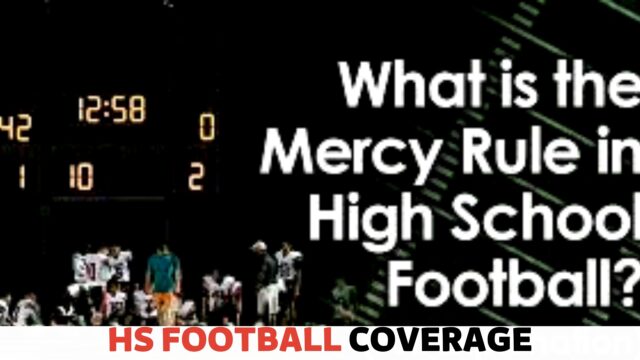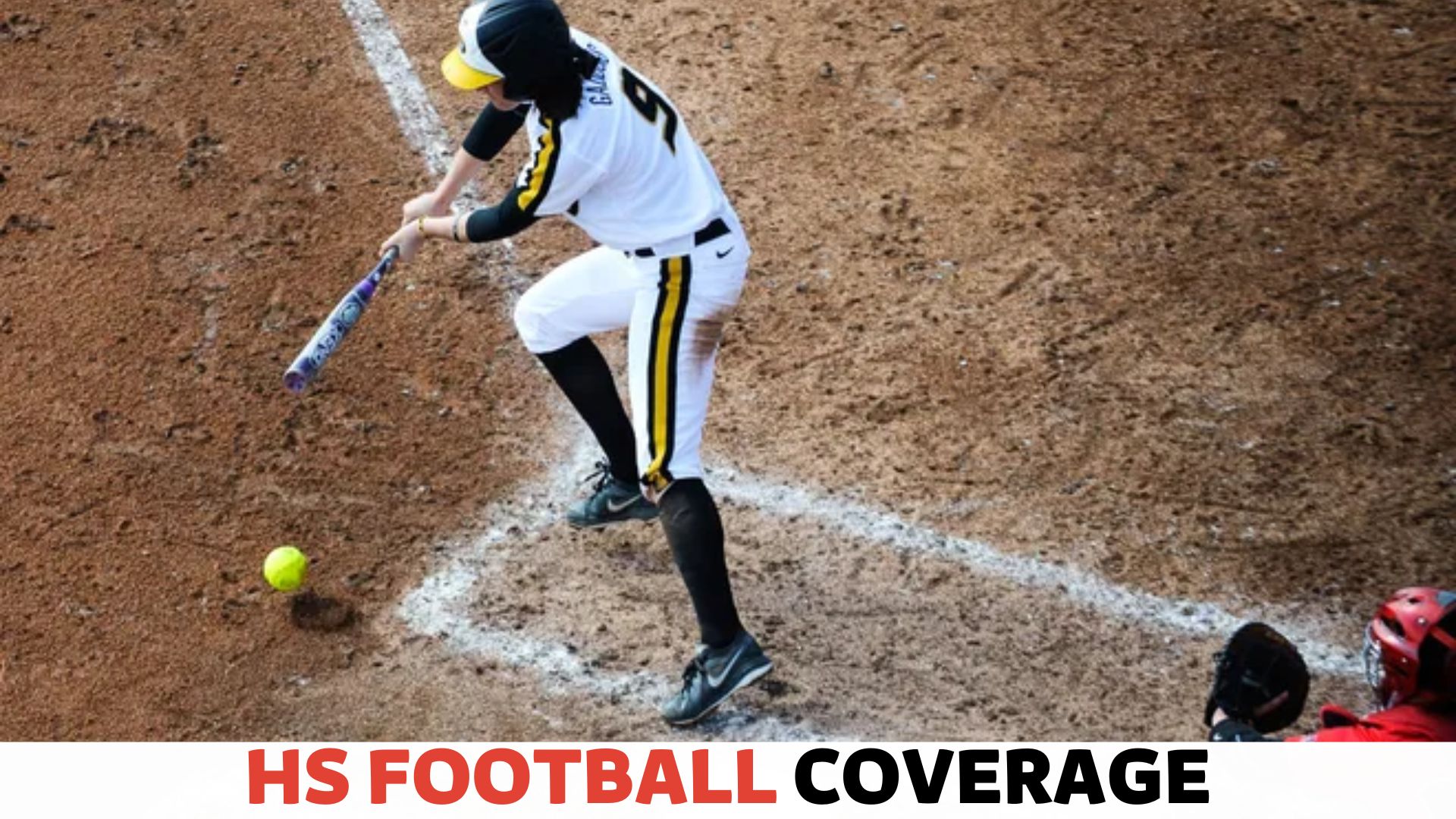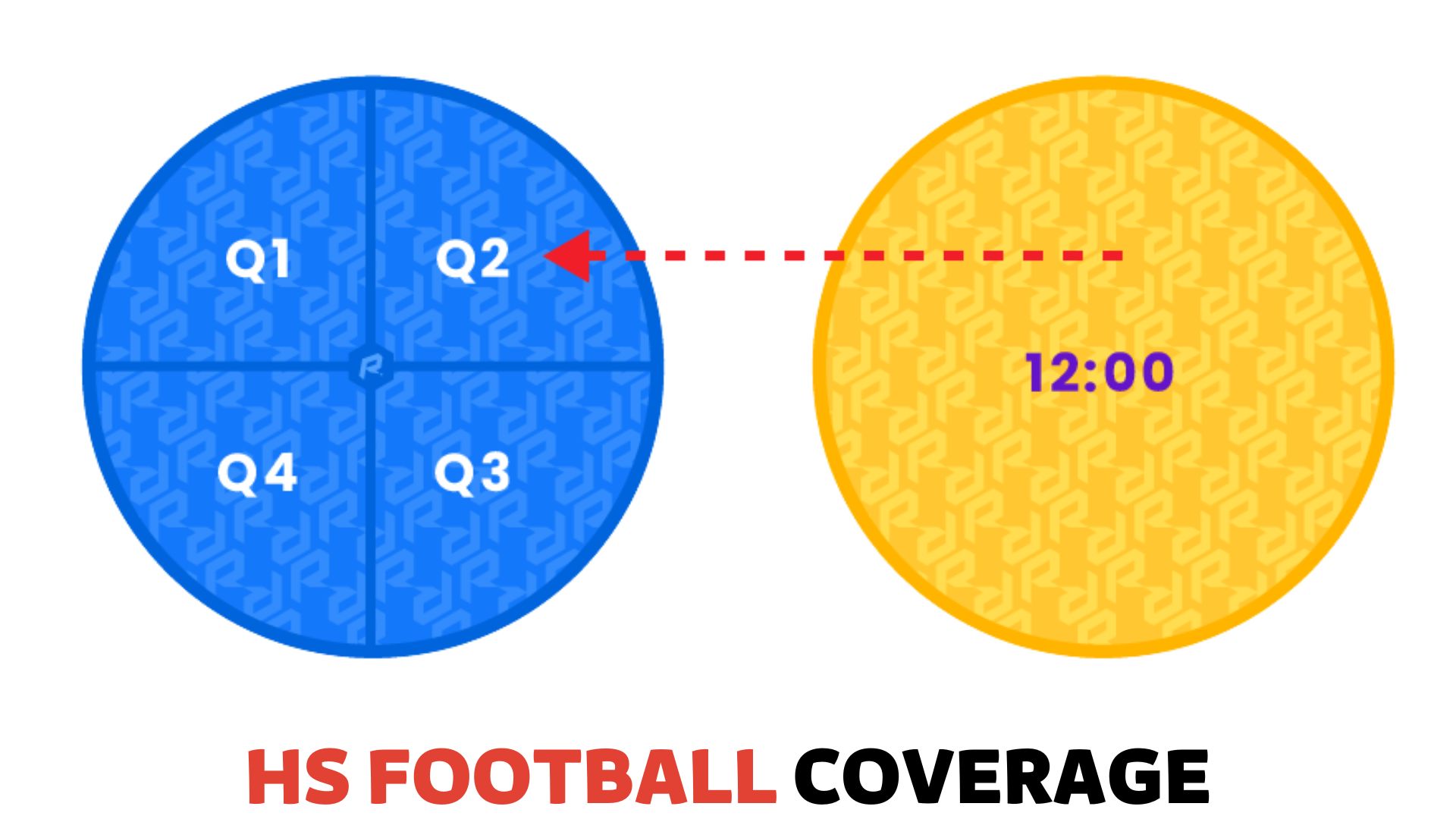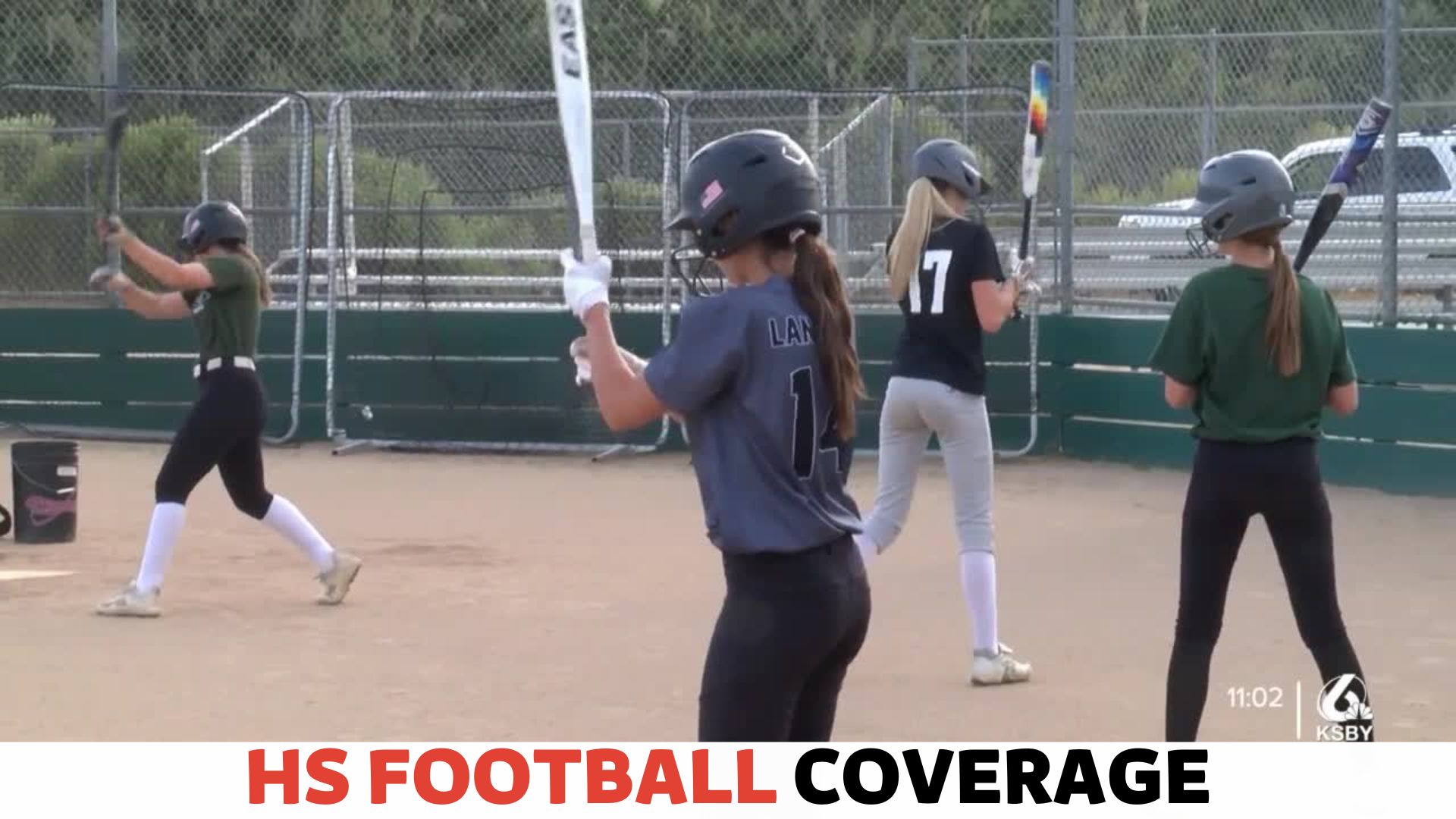
The Mercy Rule is a rule that states if a team is winning by a certain point differential at the end of either the second quarter or third quarter, the game ends and the winning team is declared the winner.
Have you ever heard of the Mercy Rule in High School Football? This is one of the most important questions in the world of High School Football. The Mercy Rule is used in High School Football to stop the clock when the score gets out of hand. There are some exceptions to this rule so pay attention for more information.
This rule has been in place in High School Football since 1972. The purpose of this rule is to prevent one team from completely dominating another team over time, protecting both players (who may get injured) and fans (who have traveled to see a game). This article will look into the Mercy Rule in High School Football in the US and how it works.
What is the Mercy Rule?
The Mercy Rule in High School Football is a rule that is designed to prevent one team from embarrassingly blowing out another team. If one team is ahead by a certain number of points (usually 35), the game will be called off, and the team with the lead will be declared the winner. This rule is designed to protect the dignity of the team that is trailing and to prevent any further injuries from occurring.
Mercy Rules vary by sport and can be used differently depending on how competitive teams are expected to be in each league or tournament. For example, some leagues use different point differentials depending on whether it’s regular season play versus playoff games (4 points vs 6 points).
While many critics believe that Mercy Rules should be implemented more often across all sports, especially those with high risk for an injury like football there are also critics who argue against implementing such policies because they believe doing so makes High School Football less physically demanding, which leads to fewer injuries among opposing teams (especially when one side clearly has more talent than another).
Why is the Mercy Rule Implemented?
The Mercy Rule is enacted to protect players from injury, keep games from going on too long and keep the game fun for both teams. It’s also used to make sure that every team has a chance at winning, no matter how well they play or how poorly they play.
The reason why this rule is in place is that there are certain situations where it can be dangerous for players to continue playing the game after losing a certain number of points (or goals).
For example: if one team is up by 40 points with only one minute left in regulation play, then their opponent would be forced into an impossible situation where they have no chance of winning even if they score a touchdown and two-point conversion.
The Mercy Rule is implemented in order to provide a more fair and balanced game. This is especially important in youth sports, where the skill level of the players can vary greatly. By implementing the Mercy Rule, it ensures that the game is not one-sided and that both teams have an equal chance to win.
But realistically speaking, we all know that isn’t going to happen because no sane person would try something like that unless he/she wanted something bad enough, like maybe money or fame.
How Does the Mercy Rule Affect the Game?
The Mercy Rule is typically used in youth or amateur sports, but can also be used in professional leagues. The Mercy Rule is typically enforced when one team is ahead by a certain number of runs or points. The rule is designed to protect the losing team from further embarrassment and to prevent the winning team from running up the score.
The winning team does not have to worry about extending the game, and the losing team may be able to salvage some pride by at least being competitive in what would otherwise be a blowout loss.
The Mercy Rule came into effect in 2001 as part of NFHS (National Federation of High Schools) rule changes that were implemented in response to concerns over safety issues following several high-profile injuries during football games across America during the 1990s.
The Mercy Rule can have a significant impact on the game. For the losing team, the rule can help to prevent further humiliation. For the winning team, the rule can prevent them from running up the score and making the game less competitive. The rule can also shorten the game, which is beneficial for both teams.
Criticisms of the Mercy Rule
There are a few criticisms of the Mercy Rule in High School Football.
- One is that it can lead to blowouts, as the team with the lead can just run out the clock and coast to victory.
- Another is that it can be unfair to the team that is behind, as they may have been right on the verge of a comeback when the game is called.
- Finally, some argue that the Mercy Rule can take the excitement out of a close game, as the team that is behind may not get a chance to mount a comeback.
The Mercy Rule has its critics, who argue that it is unfair to the losing team. The team should have a chance to come back and win if they can score enough points in the fourth quarter.
Some people also think that taking away any chance of winning makes High School Football less exciting for both players and fans alike.
How Has the Mercy Rule Impacted the Overall Safety of High School Football Players?
The implementation of the Mercy Rule in High School Football has had a positive impact on the overall safety of players.
Competitiveness
The rule ensures that a team cannot continue to score points when they have a significant lead over their opponents. This prevents teams from running up the score and keeps the game competitive.
Sportsmanship
The Mercy Rule has also helped to improve sportsmanship as it discourages teams from running up the score and humiliating their opponents.
Safety of Players
The Mercy Rule has had an impact on the overall safety of High School Football players. It has increased the number of concussions and forced players to play through injuries, which can lead to further injury or permanent disability.
The Mercy Rule also encourages aggressive play by teams who are trying to win rather than playing conservatively in order to protect their players from injury.
The consequences of these changes are not yet fully understood, but it is clear that they have made high school sports less safe than before the implementation of this rule change
When Was the Mercy Rule First Implemented in High School Football?
The Mercy Rule is a common feature in High School Football, but it wasn’t always that way. The first use of the Mercy Rule in High School Football was back in the twentieth century when it was implemented to ensure that players were not injured and could play multiple seasons of football.
The idea behind this rule is that if one team has a significant lead over the other team at halftime or at any point in the game, then the game should end early so as not to cause further harm or injury to those involved with playing on either side of things.
What Are the Specific Guidelines For the Mercy Rule in High School Football?
These guidelines vary from state to state and can differ depending on the governing body that oversees high school sports.
Generally speaking, however, once a team has established a lead of 35 or more points by halftime or anytime during the second half of play, referees may choose to initiate the Mercy Rule. When this happens, the clock runs continuously without stopping (except for official timeouts) until the game ends.
If you’re wondering how many points it takes to be considered “leading” in football, it’s actually quite simple: if you’re up by 28 or more points (and not just tied), then your team has won, and the game is over.
If your opponent gets within 27 points of you before their next possession, they can still win, but only if they score again before getting another possession themselves!
Are There Any Exceptions to the Mercy Rule in High School Football?
There are a few exceptions to the Mercy Rule in High School Football. These situations include:
- If the game is tied at the end of the third quarter, there will be an additional 15 minutes of play before it’s called due to darkness or weather conditions.
- If you’re playing in an area where daylight savings time isn’t observed (like Arizona), you’ll have two additional minutes added onto each half as well.
- If there’s still no winner after four quarters, then we go into overtime! This means that each team gets one possession from its own 25-yard line with no timeouts, and sudden-death rules apply if both teams score during their turn on offense.
If not, then whoever had possession last goes first on offense again until someone scores, or we go through all four downs without either team scoring (this rarely happens).
How Do Coaches and Players Prepare For a Game That May Potentially Result in the Mercy Rule Being Implemented?
Coaches and players need to be aware that the Mercy Rule is in place. The Mercy Rule is a good thing for players because it means that they won’t have to play through an entire game with their team losing by a large margin.
It’s also good for coaches because it allows them to save their energy for more important games later in the season, instead of wasting it on a meaningless game against an opponent who has no chance of winning.
Fans enjoy watching High School Football games because they get excited about seeing their favorite team win; however, if there were no Mercy Rule implemented, then fans would be left disappointed when their favorite team loses badly (and often).
The best part about having a Mercy Rule implemented is how beneficial it can be for referees. Referees don’t want any part of making bad calls or missing calls during games; therefore, having something like this set up beforehand helps alleviate some pressure off these officials’ shoulders while still allowing them ample opportunity.
Do High School Football Programs Universally accept the Mercy Rule?
The Mercy Rule is only sometimes accepted by High School Football programs. Some coaches and players feel that the Mercy Rule is unfair, while others see it as necessary. The Mercy Rule, also known as the “running clock,” is a measure that is typically used in High School Football to prevent one team from running up the score on another.
The controversy surrounding the implementation of a Mercy Rule in High School Football can be traced back to its roots in college sports. In both college and professional sports, teams are required to play until they run out of time or score points before their opponents do, regardless of whether it’s fair or not for either team involved in the game.
Conclusion
The Mercy Rule is a controversial rule that has been implemented in football since the 1990s. Its main purpose is to protect players from unnecessary injuries, but some argue that it takes away from the spirit of the game.
The Mercy Rule can be implemented at two different points during a game: after halftime or after three quarters are complete. When this happens, teams must stop playing immediately and declare the winner based on who currently has more points than their opponent by touchdown differential or more than seven points total at any point during regulation time.
- Read More: Can You Hurdle In High School Football?















